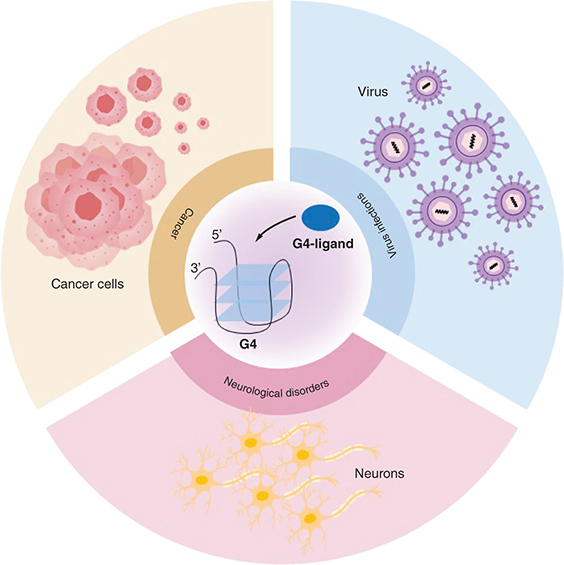Abstract
G-quadruplexes (G4s) within the human genome have undergone extensive molecular investigation, with a strong focus on telomeres, gene promoters and repetitive regulatory sequences. G4s play central roles in regulating essential biological processes, including telomere maintenance, replication, transcription and translation. Targeting these molecular processes with G4-binding ligands holds substantial therapeutic potential in anticancer treatments and has also shown promise in treating neurological, skeletal and muscular disorders. The presence of G4s in bacterial and viral genomes also suggests that G4-binding ligands could be a critical tool in fighting infections. This review provides an overview of the progress and applications of G4-binding ligands, their proposed mechanisms of action, challenges faced and prospects for their utilization in anticancer treatments, neurological disorders and antiviral activities.
Graphical abstract

Financial disclosure
This work was supported by the GUP-2020-006 Universiti Kebangsaan Malaysia (UKM). The authors have no other relevant affiliations or financial involvement with any organization or entity with a financial interest in or financial conflict with the subject matter or materials discussed in the manuscript apart from those disclosed.
Competing interests disclosure
The authors have no competing interests or relevant affiliations with any organization or entity with the subject matter or materials discussed in the manuscript. This includes employment, consultancies, honoraria, stock ownership or options, expert testimony, grants or patents received or pending, or royalties.
Writing disclosure
No writing assistance was utilized in the production of this manuscript.
